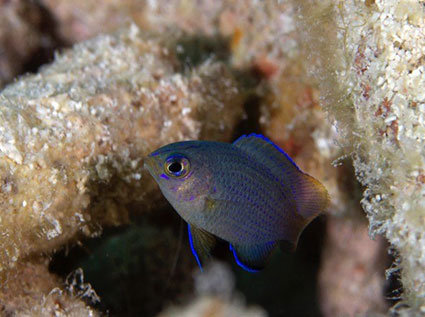Reachers from Miami’s University of Rosenstiel School of Marine and Atmospheric Science have been simulating and studying reproductive strategies of three reef species to better understand the relationship between larvae dispersal and diversity within reefs. The university’s own Connectivity Modeling System was used to track larval movements in a simulated reef environment of the Caribbean sea plume (Anthiellogorgia elisebeathae), the bicolor damselfish (Stegastes partitus) and the Caribbean spiny lobster (Panulirus argus).  “We found that the rate at which a species spawn drives the relatedness between distant populations,” said Claire Paris, associate professor of ocean sciences at UM. “Therefore more frequent spawning is more likely to stabilize the connectivity network.” “There is tremendous variability in how often reef animals reproduce and release eggs and larvae, yet they all find their way to coral reefs,” said Andrew Kough, UM Rosenstiel School alumnus and lead author of the study. “Our study explored how changes in reproductive frequency shape an animal’s connectivity network.” Read more about the school here!
“We found that the rate at which a species spawn drives the relatedness between distant populations,” said Claire Paris, associate professor of ocean sciences at UM. “Therefore more frequent spawning is more likely to stabilize the connectivity network.” “There is tremendous variability in how often reef animals reproduce and release eggs and larvae, yet they all find their way to coral reefs,” said Andrew Kough, UM Rosenstiel School alumnus and lead author of the study. “Our study explored how changes in reproductive frequency shape an animal’s connectivity network.” Read more about the school here!










0 Comments